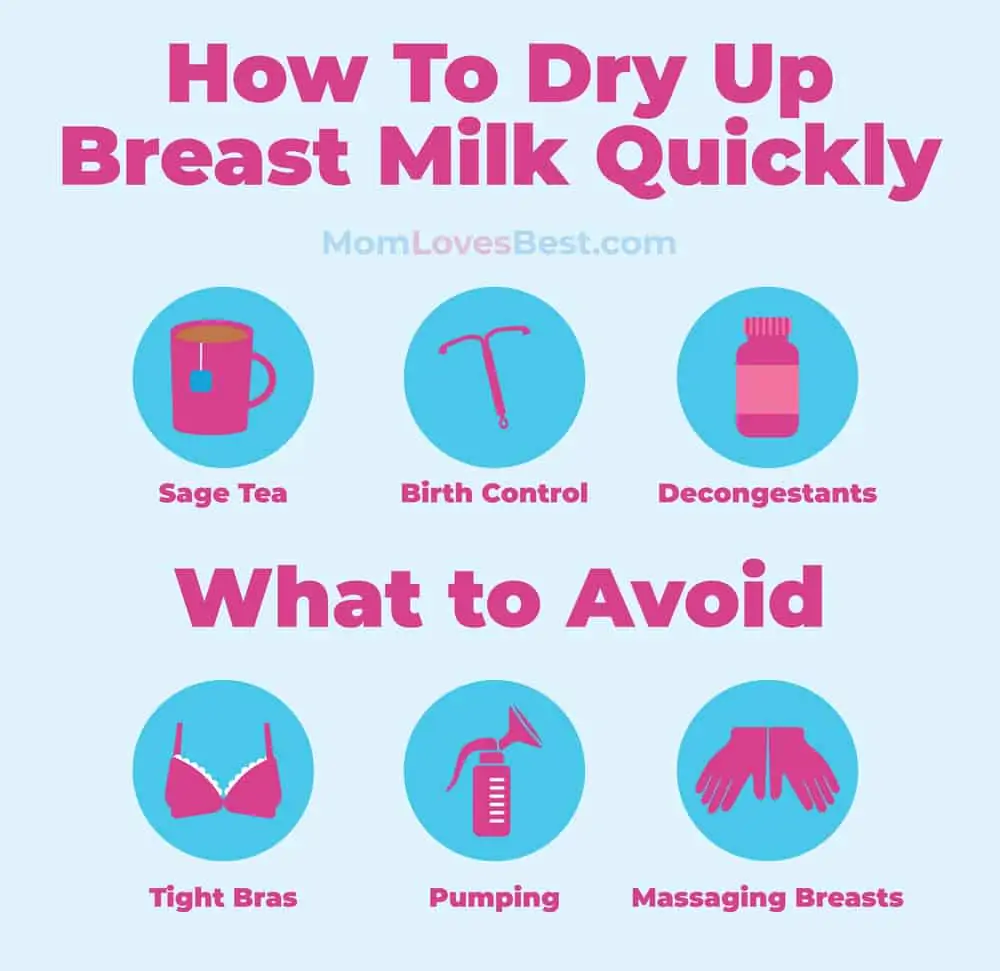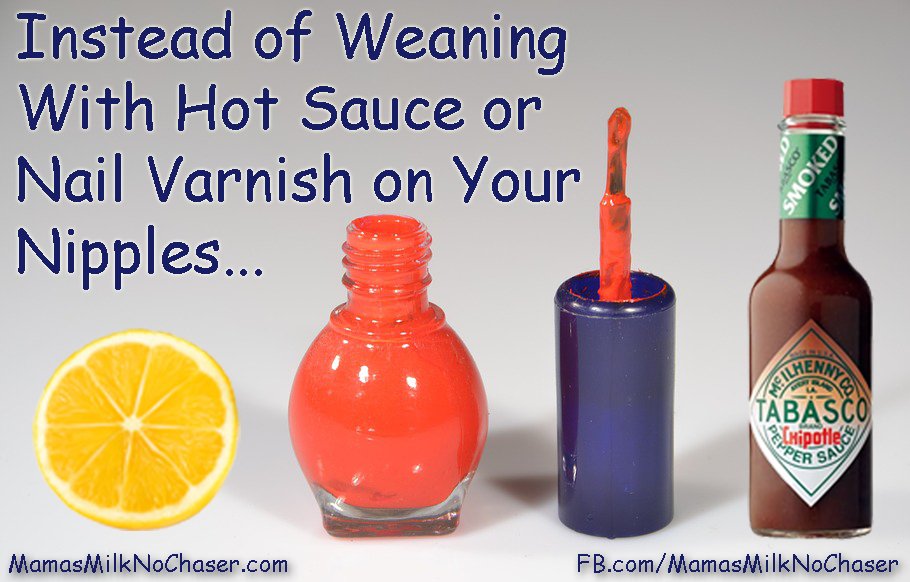Stopping breastfeeding can be emotional and challenging. Many moms seek solutions for nipple discomfort.
Applying certain products can help ease this transition. Breastfeeding is a unique bond between mother and child. But there comes a time when every mother considers weaning. This decision might be due to personal reasons, work commitments, or simply the baby’s growth.
Whatever the reason, ending this journey can bring discomfort, especially for the mother. Nipple pain is a common issue during this phase. Fortunately, there are safe and effective remedies to ease this discomfort. These options can help soothe sore nipples and make the weaning process smoother. Understanding what to use and how it works can make a big difference. Let’s explore the options that can bring relief.

Credit: www.gibbonsfuneralhome.com
Natural Remedies
Applying aloe vera gel can soothe sore nipples, making breastfeeding cessation easier. Coconut oil offers moisturizing relief for dry skin. Try cabbage leaves for their cooling effect and to reduce swelling naturally.
Breastfeeding is a beautiful journey, but it can come with its own set of challenges. If you’re looking to wean your baby and wondering what natural remedies can help ease the process, you’re not alone. Many mothers have turned to simple, home-based solutions to help them stop breastfeeding comfortably and effectively.Using natural remedies can provide gentle relief and help transition your baby without harsh chemicals or medications. Let’s look at some tried-and-true methods that may work for you.Cabbage Leaves
Cabbage leaves have been a go-to remedy for many mothers trying to stop breastfeeding. These leaves offer a cooling sensation, which can relieve discomfort and reduce milk supply.Place chilled cabbage leaves directly onto your breasts and leave them until they wilt. Repeat this process a few times a day. Did you know? Many moms swear by this method, finding it both soothing and effective. Have you tried it yet?Peppermint Oil
Peppermint oil is another natural remedy that can help reduce milk supply. Many mothers have found success by applying a small amount of diluted peppermint oil around the nipple area.Be sure to mix it with a carrier oil to avoid any irritation. Using peppermint oil not only aids in weaning but leaves you feeling refreshed with its invigorating scent.Have you considered how a simple oil can make such a difference in your breastfeeding journey? It’s fascinating to see how nature provides solutions right at our fingertips.These natural remedies offer a gentle way to support your decision to stop breastfeeding. Remember, each mother’s experience is unique, so what works for one may not work for all. Have you discovered any other natural remedies that have helped you along the way? Sharing your journey could inspire and assist others in their transition.Over-the-counter Options
Exploring over-the-counter options for nipple care can ease the transition away from breastfeeding. Nipple creams and soothing balms provide relief and protection during this sensitive period. These products help maintain comfort and promote healing, making the process smoother for mothers.
Breastfeeding is a beautiful journey, but sometimes it needs to come to an end. Whether you’re transitioning your baby to solid foods or simply ready to stop breastfeeding, you might wonder what you can do to ease this process. Luckily, there are several over-the-counter options that can help you stop breastfeeding smoothly while ensuring your comfort.Nipple Creams
Nipple creams are your allies when it comes to relieving soreness and discomfort. They are readily available at pharmacies and designed to soothe irritated skin. Many moms swear by lanolin-based creams, which are safe and effective.Imagine finally finding relief after a long day of nursing. Apply a small amount of nipple cream to keep your skin moisturized and protected. Have you ever considered how a simple cream can make such a difference?Breast Pads
Breast pads play a crucial role in the transition from breastfeeding. These pads absorb any leakage and keep you dry throughout the day. Disposable or reusable, they are easy to use and fit discreetly in your bra.Think about the convenience of staying dry without having to change clothes frequently. You might start with disposable pads for easy management and then switch to washable ones for a sustainable choice.How do you balance comfort and sustainability in your daily life?Herbal Supplements
Herbal supplements can soothe sore nipples and ease the transition from breastfeeding. Consider using chamomile or calendula balms. These natural remedies provide gentle relief and support for mothers seeking comfort.
Herbal supplements offer a natural way to stop breastfeeding. Many mothers seek gentle methods to ease the transition. Using herbs can be effective. They may help reduce milk supply without harsh effects. These solutions are often simple to prepare. Let’s explore some popular herbal options.Sage Tea
Sage tea is a popular choice to reduce milk production. Sage contains natural compounds that decrease lactation. Brewing sage tea is straightforward. Use dried sage leaves for best results. Steep them in boiling water for 10 minutes. Drink one cup of sage tea daily. This may help lower milk supply.Parsley Infusion
Parsley infusion is another effective herbal solution. Parsley has properties that can help reduce milk flow. Make a parsley infusion with fresh parsley leaves. Boil water and pour it over the leaves. Let it steep for 15 minutes. Drink this infusion once a day. Some mothers find it helps reduce lactation gradually.Medical Interventions
Nipple creams or soothing gels can help ease discomfort and stop breastfeeding. Lanolin and coconut oil are popular choices. Applying cabbage leaves might also provide relief and help reduce milk supply.
When the time comes to stop breastfeeding, you may find yourself searching for effective ways to ease the transition. While emotional and practical strategies are common, sometimes medical interventions are necessary. These interventions can offer a structured approach to help your body adjust. But what do they entail? Let’s dive into the specifics.Prescription Medication
Prescription medications can be a game-changer for stopping breastfeeding. They work by reducing milk production, making the process smoother for both you and your baby. Cabergoline is one such medication often prescribed.Have you considered the implications of taking medication? It’s crucial to understand how these drugs interact with your body and any potential side effects. Always weigh the pros and cons before proceeding.Consulting with your healthcare provider will help you navigate these decisions. They can offer personalized advice based on your health history.Consulting A Healthcare Provider
Your healthcare provider is your best ally during this transition. They can evaluate your situation and recommend the most suitable interventions. Are you experiencing discomfort or engorgement? They can provide practical solutions.Discuss your goals with them. Are you looking for a gradual decrease in milk supply or a quicker cessation? This conversation can lead to tailored strategies that fit your lifestyle.What about emotional support? Medical professionals can also guide you through the emotional aspects of stopping breastfeeding. They understand the challenges and can offer reassurance and guidance.Remember, every journey is unique. Your healthcare provider can help make yours as smooth as possible.Lifestyle Changes
Deciding to stop breastfeeding is a personal journey. Lifestyle changes can ease this transition. Adjusting daily habits can help manage discomfort and support your decision.
Diet Adjustments
Consider changing your diet to reduce milk production. Avoid foods that boost lactation like oats and fenugreek. Include foods known to decrease milk, such as parsley and peppermint.
Eating a balanced diet supports your body’s needs. Focus on nutrient-rich foods to maintain energy and health. This aids in coping with the physical changes.
Hydration Management
Monitor your fluid intake to influence milk supply. Consuming less fluid can naturally reduce milk production. But, ensure you stay hydrated to maintain overall health.
Drinking just enough, without overconsuming, helps balance milk production. Listen to your body’s thirst signals to find the right balance.

Credit: www.amazon.com
Psychological Techniques
Stopping breastfeeding can be challenging. Applying cabbage leaves or peppermint oil on nipples may help deter nursing. These natural methods offer a gentle way to ease the transition.
When deciding to stop breastfeeding, psychological techniques can be helpful. They support both the mother and the baby emotionally. These techniques focus on mental well-being. They can ease the transition for both parties.###Mindfulness Practices
Mindfulness helps you stay present. It reduces anxiety and worry. Focus on your breathing. Notice each inhale and exhale. It calms the mind. This practice can create a sense of peace. Try to do this daily. A few minutes can make a difference. Journaling is another mindfulness tool. Write down your thoughts and feelings. It helps you process emotions. It also helps in understanding your own needs.###Stress Reduction
Stress can impact your decision to stop breastfeeding. It affects both you and your baby. Simple stress reduction techniques can help. Deep breathing exercises are effective. Breathe in for four counts. Hold for four counts. Exhale for four counts. Repeat this process. It relaxes the body. Physical activity also reduces stress. A short walk can clear your mind. It boosts your mood. Positive affirmations can be powerful. Tell yourself, “I am doing my best.” These words can uplift you.Support Systems
Deciding to stop breastfeeding is a significant choice for many mothers. Support systems play a crucial role during this transition. They offer emotional and practical help. Having a strong support network can make the process smoother and less stressful. Let’s explore how partners and support groups can assist during this time.
Partner Involvement
Partners can provide vital emotional support. They can help by sharing the caregiving duties. This allows the mother to focus on her needs. A partner’s encouragement boosts confidence and eases stress. Simple acts like preparing meals or taking over nighttime care can help. Being involved makes partners feel connected to the process.
Support Groups
Joining a support group connects mothers with others in similar situations. These groups offer a safe space to share experiences and advice. Mothers can learn from others who have stopped breastfeeding. Hearing different stories can provide comfort and reassurance. Many communities have local support groups. Online groups are also available for those who prefer virtual support. They offer flexibility and convenience for busy schedules.
When To Seek Professional Help
Stopping breastfeeding can bring challenges. Sometimes, expert advice is necessary. Knowing when to seek professional help ensures safety and health. Certain signs indicate it’s time to consult a healthcare provider.
Signs Of Complications
Some discomfort is normal. But persistent pain is not. If nipples are sore even after trying remedies, consult a doctor. Cracks or bleeding on nipples can signal an issue. These symptoms might need medical attention.
If the baby seems unsatisfied or loses weight, seek help. Milk supply might be affected. A lactation consultant can offer guidance. They provide solutions tailored to your needs.
Emergency Situations
Some situations require immediate action. Fever or chills while breastfeeding could be serious. These might indicate an infection like mastitis. Seek medical care without delay.
Severe nipple damage is also alarming. Blisters, pus, or persistent redness demand urgent attention. Professionals can assess and treat these conditions effectively.
Your health and comfort are priorities. Professional help ensures safe and smooth transitions in breastfeeding.

Credit: www.amazon.com
Frequently Asked Questions
What Is The Fastest Way To Dry Up Breast Milk?
Wear a tight sports bra to reduce milk production. Apply cold cabbage leaves to breasts. Use cold compresses to relieve swelling. Drink sage or peppermint tea to decrease milk supply. Avoid nipple stimulation and expressing milk. Always consult a healthcare professional for personalized advice.
What Can I Use If I Want To Stop Breastfeeding?
Consider using breast pumps to gradually reduce milk supply. Consult a doctor for safe medications to stop breastfeeding. Wear a supportive bra and apply cold compresses to ease discomfort. Seek guidance from a lactation consultant for personalized advice.
What Can I Put On My Nipples To Stop Them From Showing?
Use nipple covers, adhesive pads, or soft bra inserts to conceal nipples effectively. Opt for thicker fabric bras for added coverage.
What Can I Put On My Nipples To Stop Them From Hurting While Breastfeeding?
Use lanolin cream to soothe sore nipples during breastfeeding. Apply coconut oil or aloe vera for natural relief. Keep nipples dry and exposed to air. Consider using breast shells to prevent friction. Consult a lactation expert for personalized advice.
What Can I Apply To Soothe Sore Nipples?
Lanolin cream can help soothe and protect sore nipples during breastfeeding.
Conclusion
Stopping breastfeeding can be challenging. Many options can help ease the process. Consider using safe products like nipple shields or creams. These can reduce discomfort and protect sensitive skin. It’s important to choose what’s comfortable for you. Consult a healthcare professional for personalized advice.
They can guide you on effective methods. Remember, every mother’s journey is unique. Patience and care make a difference. Support from loved ones can be invaluable. Trust your instincts and take small steps. Ultimately, find what works best for your body and lifestyle.
Your comfort and well-being matter most.





